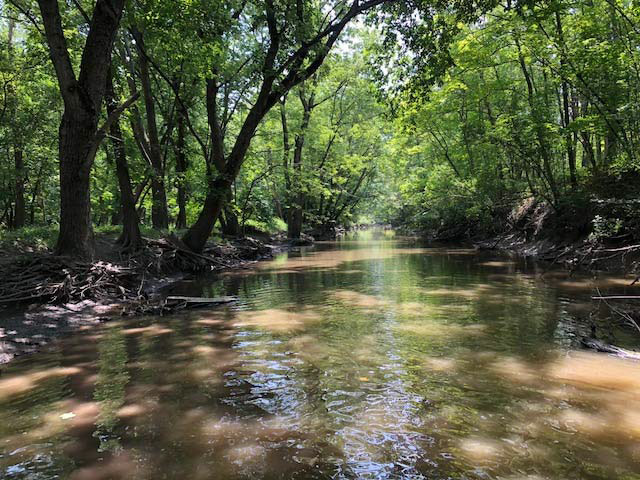The 2018 and 2019 results yielded poor and very poor results for both the macroinvertebrate and fish assemblages in each of the subwatersheds and the mainstem of the North Branch Chicago River. Urban runoff is the major contributor of pollution within the watershed including dissolved substances, heavy metals, and polycyclic aromatic hydrocarbons. It also plays a major role in habitat alterations and heavy silt coverage that are also ubiquitous throughout the survey area. High diel D.O. swings and low D.O. concentrations can likely be attributed to the high organic matter content of the sediments as chlorophyll concentrations for both sestonic and benthic algal communities were mostly in the good or excellent IPS threshold ranges at all sites. Fish IBIs (fIBI) were primarily in the very poor to low poor range. The highest fIBI was found in the Skokie Lagoons (SR‐7) and likely due to stocking efforts that included Walleye, Channel Catfish, Northern Pike, and various Sunfish species. The macroinvertebrate IBI (mIBI) scores were generally poor with a single site in the lower fair range. The Middle Fork site MF14 supported the highest percent of EPT taxa (43.6%) and attained the highest mIBI score (32.8). This site offered the highest quality habitat in the survey area (QHEI = 67.0). The AQLU attainment status for the NBWW survey area is consistently non‐poor at each site.
Neither of the two major point sources (NSWRD Clavey Rd. and Deerfield WRFs) played a major role in the observed results with the exception of minor increases in some chemical constituents associated with municipal wastewater. No distinguishable signatures of excessive nutrient enrichment were apparent in the modified SNAP analysis even though the two WRFs heavily dominate the low flows of their receiving streams. Nor did wastewater effluents have any apparent beneficial effects as was observed in 2016 and 2018 with the entry of large volumes of treated wastewater discharges in the Upper Des Plaines River (MBI 2020b).
Perhaps the most important observation from the 2018‐2019 bioassessment is that the overall habitat in each of the subwatersheds and in the mainstem North Branch Chicago River site is mostly poor. Heavy silt coverage and muck substrates coupled with the lingering effects of legacy channel and hydrological modifications reduce the habitat available for macroinvertebrates and fish and hamper the assimilation of pollution in general. Urban runoff contributes to toxic levels of PAHs and metals in sediments that are prevalent throughout the survey area. The biological results are associated with numerous exceedances of IPS thresholds with no sites meeting the Illinois EPA General Use designation for aquatic life.
Reinforcing these observations are the low and very low Restorability scores generated by the NE Illinois IPS (see Table 17, p. 72) which means that the challenges with restoring the streams of the NBWW study area to attaining the Illinois General Use for aquatic life are greater and dependent of restoration actions that address the most limiting chemical and physical factors as is demonstrated by the consistent repetition of very poor and poor causes of impairment related to urban land uses coupled with flow and habitat alterations.

